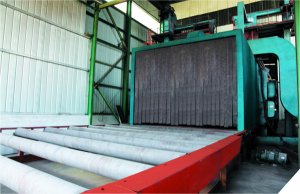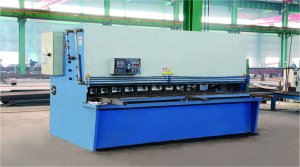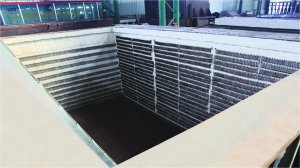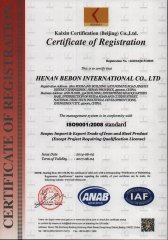The chemical composition of S960Q steel plate mainly includes carbon (C), silicon (Si), manganese (Mn), phosphorus (P), sulfur (S), and a small amount of chromium (Cr), nickel (Ni), molybdenum (Mo), etc. element. Specifically, the content of its chemical components is controlled as follows:
Carbon (C) content: ≤0.20%
Silicon (Si) content: ≤0.80%
Manganese (Mn) content: ≤1.70%
Phosphorus (P) content: ≤0.025%
Sulfur (S) content: ≤0.015%
Chromium (Cr) content: ≤1.5%
Nickel (Ni) content: ≤2.0%
Molybdenum (Mo) content: ≤0.7%
In addition, S960Q steel plate also contains a small amount of copper (Cu), vanadium (V), nitrogen (N), niobium (Nb) and boron (B) and other elements, and their contents are controlled as follows: copper (Cu) content ≤ 0.50%, Vanadium (V) content ≤ 0.12%, nitrogen (N) content ≤ 0.015%, niobium (Nb) content ≤ 0.06%, boron (B) content ≤ 0.005%.
The reasonable proportion of these elements ensures that S960Q high-strength plate has high strength and good toughness, making S960Q steel plate perform well in various engineering applications with high strength requirements.
The production process of S960Q steel plate involves multiple key steps to ensure its high quality and high performance. The following is the common production process of S960Q steel plate:
Primary refining: This is the initial stage of steel plate production. The raw materials are initially smelted through the primary refining furnace to remove impurities and prepare for the subsequent refining process.
LF refining: After primary refining, the molten steel enters the LF refining furnace for further refining. By adjusting the chemical composition and temperature, the purity and uniformity of the molten steel are ensured.
VD treatment: The refined molten steel undergoes VD vacuum degassing treatment to remove gases and inclusions in the molten steel and improve the purity of the steel plate.
Continuous casting (mold casting): The treated molten steel is cast through a continuous casting machine or a mold casting machine to form the basic shape of the steel plate.
Cleaning and heating: The surface of the cast steel plate is cleaned to remove oxide scale and other impurities, and is heated to prepare for the subsequent rolling process.
Rolling: The heated steel plate is rolled through a rolling mill to the required thickness and size.
Surface inspection: The rolled steel plate is subjected to surface inspection to ensure that the surface quality meets the standards.
Batch and flaw detection: The steel plates are divided into batches according to specifications, and flaw detection is performed to check whether there are defects inside the steel plates.
Heat treatment: Steel plates that pass flaw detection are heat treated, usually including quenching and tempering, to adjust the mechanical properties and organizational structure of the steel plates.
Cutting sampling and performance testing: After the steel plate is heat treated, cutting and sampling are performed to conduct performance testing such as mechanical properties and chemical composition to ensure that the quality of the steel plate meets the requirements.
Cutting process: Qualified steel plates are cut according to customer needs. Generally, when the thickness of the steel plate is not greater than 20mm, CNC plasma cutting or CNC laser cutting is preferred. When the thickness is greater than 30mm, CNC flame cutting is chosen to ensure cutting accuracy and efficiency.
Through this series of production processes, S960Q steel plates can have high strength, good toughness and welding performance to meet the needs of various engineering applications.

 Address:Zhengzhou city in China.
Address:Zhengzhou city in China. Phone:0086-371-86151827
Phone:0086-371-86151827 Email:
Email:



 Address: Zhengzhou city in China.
Address: Zhengzhou city in China.


